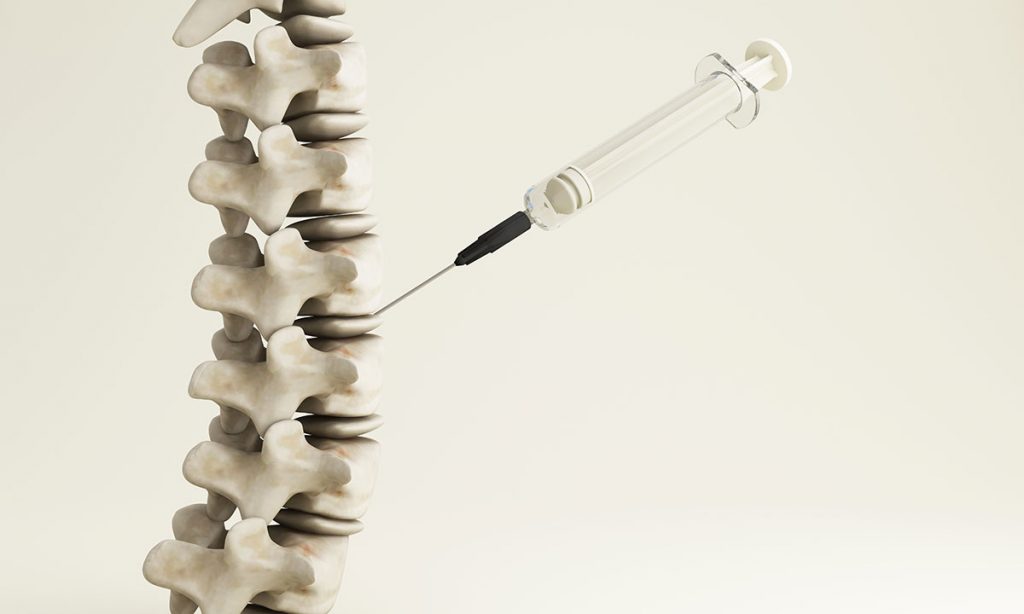Table of Contents
- What are Facet Joints?
- What are Lumbar Facet Injections?
- Facet Injection Procedure
- How Long Do Lumbar Facet Joint Injections Last?
- Long-Term Effects of Facet Joint Injections
- Safe Procedure for Pain Relief
Facet joint-related back pain is a common and often debilitating condition. However, there is hope in the form of facet joint injections, one of the most common treatments administered to provide significant pain relief. These injections can target pain in any facet joint in the spine, including the cervical and thoracic joints, but most commonly, they are lumbar facet injections. This minimally invasive treatment offers temporary relief from the often excruciating facet joint pain.
What are Facet Joints?
Facet joints are synovial joints connecting adjacent vertebrae on the backside of the spine and enabling the spine to twist and bend within limits. Each vertebra has two facet joints, one on each side. A capsule of connective tissue surrounds the cartilage-coated joint, producing synovial fluid to keep the joint lubricated. The joints contain nociceptive (pain sensations) nerve endings.

The lower back has five vertebrae making up the lumbar spine. Facet joint syndrome is a condition where the facet joints, usually in the neck or lower back, experience inflammation or deterioration due to aging and everyday wear-and-tear, injury, arthritis, excessive joint twisting or flexing, repetitive movements, obesity and disease and become a source of pain. This condition can lead to chronic back pain and reduced mobility. Some of the most common conditions treated with facet joint injections include the following.
- Lumbar Facet Syndrome
- Spondylolysis
- Spinal Stenosis
- Degenerative spondylolisthesis
- Ankylosing spondylitis
- Trauma
- Sciatica
Pain may occur due to inflammation caused by cartilage damage and reduced synovial fluid, which can lead to bone spurs and impinged nerve roots. If facet joints become weak, they can slip and become displaced (degenerative spondylolisthesis). Injuries can also displace facet joints. These are just a few reasons people experience back pain. As many as 15-41% of chronic low back pain cases are the result of facet joint disease.
What are Lumbar Facet Injections?
Low back pain is a leading cause of disability, and not just in the United States. Globally, 619 million people experienced low back pain in 2020. Facet injections in the back are injections of a steroid directly into the facet joint, causing the pain. For example, if given a lumbar facet injection, the steroid is injected into the facet joints in the lower back.
Facet joint injections temporarily relieve pain and play a crucial role in diagnosing spine conditions. Many spine conditions can cause pain, and if a doctor suspects a facet joint to be the source of pain, a facet joint injection of an anesthetic may be given. If this injection provides at least 80% relief, the doctor can proceed with further diagnostic tests, providing patients with a clear path toward understanding and managing their condition.
Facet Injection Procedure
The facet injection procedure is minimally invasive because it is a shot administered to the back. In an outpatient setting, the doctor will numb the area where the needle will be inserted with a numbing medication. Using fluoroscopy (x-ray guidance) to guide the needle’s insertion, a contrast dye is first injected to ensure the needle is placed in the correct position. The final step is administering a mixture of an anesthetic and a corticosteroid, which reduces inflammation.

How Long Do Lumbar Facet Joint Injections Last?
Controlled studies have found that lumbar facet joint injections may provide pain relief in 1-4 weeks for 42-92% of patients. At three months, 18-62% experienced pain relief. The pain relief experienced varies among patients, but relief may be felt from several weeks to a few months.
If a patient experiences significant pain relief for approximately three months, then a maximum of three injections per year is standard practice. However, each patient is different, so the doctor determines the exact number of injections.
Long-Term Effects of Facet Joint Injections
Though facet joint injections are considered low-risk, any medical procedures can lead to complications. Some of the potential but rare long-term effects of facet joint injections include septic arthritis, allergic reaction, local reaction to the steroid injection and bleeding.
The main concern is the possibility of experiencing side effects from multiple cortisone injections. These include weight gain, increase in blood sugar and immune system suppression. However, even these are not common side effects.
Safe Procedure for Pain Relief
Patients who experience persistent back pain that fails to respond to conservative treatment may benefit from facet joint injections. These injections are not a permanent solution but are only one element in a comprehensive pain management plan.
Sources
- https://www.physio-pedia.com/Lumbar_Facet_Syndrome
- https://www.physio-pedia.com/Lumbar_Facet_Joint_Injections
- https://www.ncbi.nlm.nih.gov/books/NBK541049/
- https://www.who.int/news-room/fact-sheets/detail/low-back-pain
- https://www.ncbi.nlm.nih.gov/books/NBK572125/
- https://radiopaedia.org/articles/facet-joint-injection
- https://pmc.ncbi.nlm.nih.gov/articles/PMC3107686/
- https://www.urmc.rochester.edu/imaging/specialties/procedures/joint-injection.aspx
